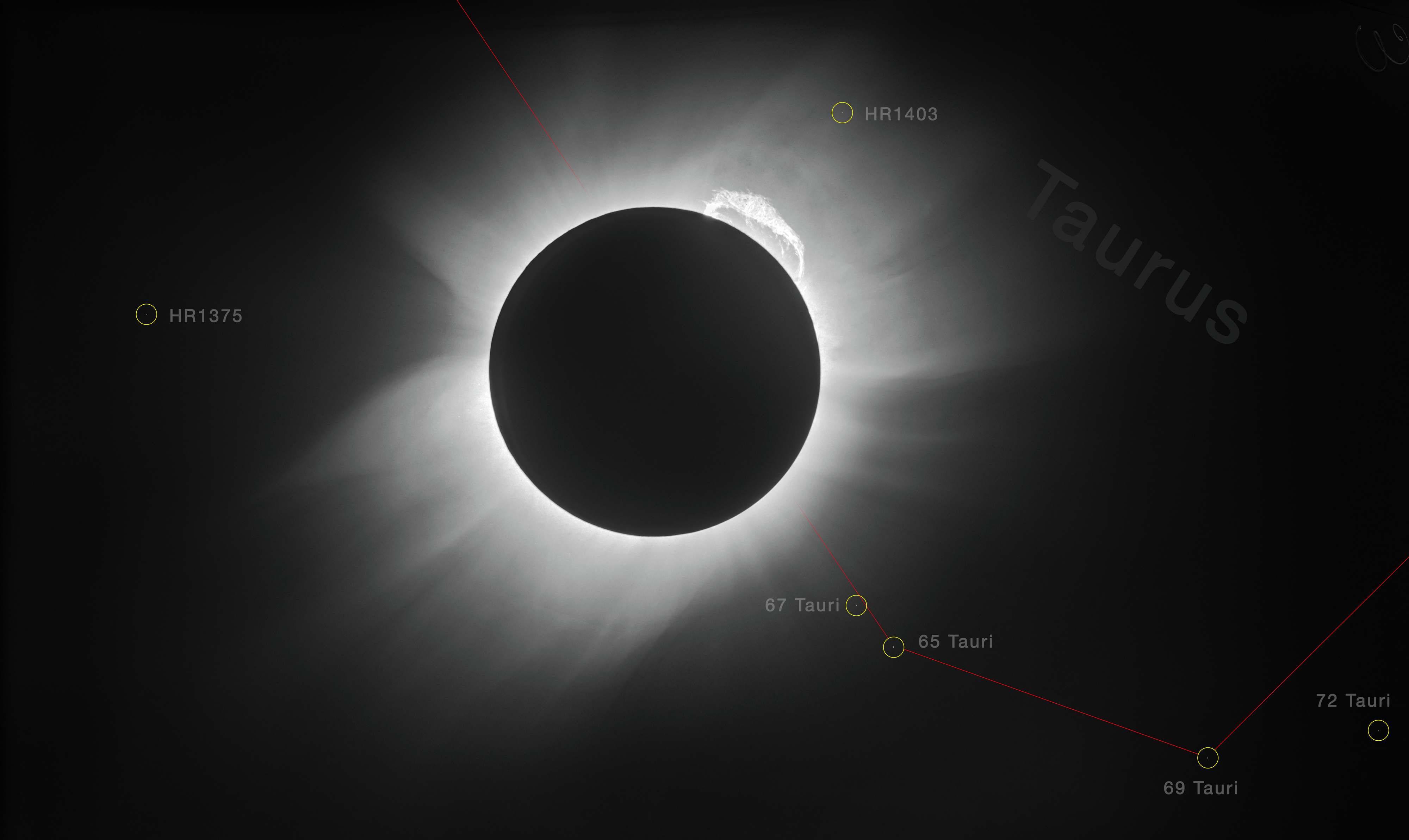Recently, we published an article with video celebrating the Anniversary of the famous May 29th, 1919 Total Solar Eclipse instrumental in confirming a key prediction of Einstein’s General Theory of Relativity.
Update
Not only was this eclipse instrumental in confirming a key aspect of Einstein’s GTR, the duration of totality was just under 7 minutes, the longest such duration in 500 years!
This eclipse offered the perfect opportunity to test GTR experimentally, by exploring whether — and how — the enormous mass of the Sun (2×1030 kg) bends and distorts incoming light from more distant stars, as predicted.
For a brief moment during the eclipse, the Moon would block the Sun’s light in the sky and allow some of the stars near the solar limb, stars not normally visible during daylight. By measuring the relative positions of these stars during the eclipse and comparing them to their positions at night, it would be possible to determine whether their light rays bend while passing close to the Sun according to GTR.
Three astronomers: Sir Arthur Eddington, Frank Watson Dyson, and Andrew Crommelin played key roles in this experiment. Eddington and Crommelin traveled to locations along the path of totality: Eddington was located on the West African island of Príncipe, Crommelin in the Brazilian town of Sobral, while Dyson coordinated the attempt from England. Eddington and Crommelin imaged the eclipse using an astrograph on loan from Oxford University along with the necessary photographic plates.
As it happened, the original plates from the expedition (one reproduced in Dyson’s original paper) were lost; luckily, copies of one of the plates were made and sent to observatories worldwide, publishing the evidence supporting this key prediction of GTR to the world.
A copy of a plate from Sobral went to Landessternwarte Heidelberg-Königstuhl, who recently scanned it as part of the Heidelberg Digitized Astronomical Plates (HDAP) project and is presented above and represents the highest resolution image of the eclipse (click on the image for download options, source: https://www.eso.org/public/images/potw1926a). It’s the result of applying modern image processing techniques including image restoration, noise reduction, and artifact removal techniques to the original plate copy.
The image unveils stunning details in the solar corona, a giant prominence emerging from the Sun’s NE quadrant and stars in the constellation Taurus, stars that were used to confirm the predictions of General Relativity. The images below represent the sky as it would appear from Sobral, Brazil during totality. The sky from Principe would be substantially similar.
Dyson’s original paper concludes with the paradigm-changing graph on page 332 plotting the displacements of the stars during the eclipse against their distance from the solar disc’s center. Dyson’s analysis shows a clear relation as a solid line: the stars closer to the solar disc are deflected more than those further away, and by roughly the amount predicted by general relativity, a value twice that predicted by Newton’s Universal Law of Gravitation.

A view to the E-NE at 8:00 AM local time, 29 May 1919 from Sobral, Brazil. The totally eclipsed sun is high in the NE with Jupiter and Venus skirting the NE horizon and Mars “above” the eclipsed sun to the southwest. Image via Stellarium.

A Binocular view of the totally eclipsed sun on 29 May, 1919 with Mars and the Pleiades to the Southwest and Aldebaran to the East. Atmosphere and all visual effect set to normal. Image via Stellarium.

A Binocular view of the totally eclipsed sun on 29 May, 1919 with Mars to Southwest and Aldebaran to the East. Atmosphere is turned off. Image via Stellarium.
Astronomy For Change: https://astronomyforchange.org
Buy us a Coffee? https://www.buymeacoffee.com/astronomychange
Follow Us On Twitter: https://twitter.com/astronomychange
Why not support us on Patreon: https://www.patreon.com/astronomyforchange
Imagination is more important than knowledge
![]()
An index of all articles can be found here.
If you enjoyed this article, please consider supporting us with a modest donation
or through a subscription on our Patreon Page
Membership at Astronomy for Change is Free!





